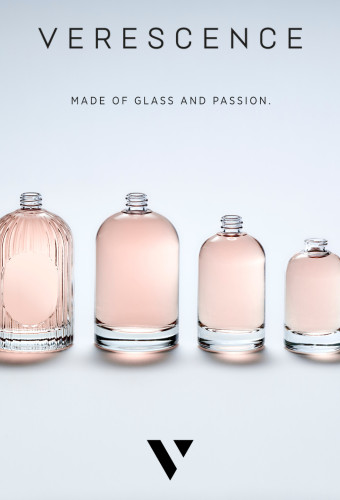"We’ve had absolutely incredible growth," said Julien Sausset, director of Parfums de Marly, a France-based niche fragrance producer. The company posted more than 50 percent sales growth in 2023 and expects more than 40 percent growth this year to $600 million in sales.
"People don’t want to smell like others anymore. They want to free themselves, affirm their identity," Sausset told AFP. Today, niche perfumes account for 10 to 12 percent of the overall market, according to Sausset. It will likely continue to expand as it is growing at 13 percent per year while the global fragrance market is growing between three and five percent.
Recently acquired by the Advent International fund, Parfums de Marly offers perfumes sold from $250 which have largely won over luxury fragrance lovers in the United States and the Middle East. The brand was created in 2009 by Julien Sprecher, an aficionado of the 18th century. Its name comes from the Chateau de Marly, located near Versailles, where Louis XV was known to throw lavish parties.
Now sold in more than 80 countries, Parfums de Marly opened their first boutique in Paris in 2016. The brand plans to open a new boutique in Paris near the Champs-Elysées in a neighbourhood known as the Golden Triangle for its high concentration of luxury shops. "What is important is to have a place where you can have your own salespeople do some storytelling and present the products," Sausset said.
Need for something different
Julie El Ghouzzi, who wrote a book on the luxury industry [1], said the sector developed in reaction to the popularization of perfumes in the 1990s, when many brands seemed to resemble one another.
Some perfumers wanted to do something different, to "blow up the notion of masculine and feminine and developed perfumes around high-end ingredients, using the names of these ingredients and not brands," she said. They used high concentrations of certain ingredients to give their perfumes unique and complex scents, such as amber, bergamot, cedarwood, pink peppercorn, or rhubarb.
These independent perfumers "didn’t have the money to order custom bottles, so they used rectangular ones for all their perfumes. And it worked," said El Ghouzzi. However, their success drove luxury houses like Dior and Cartier to imitate them with simple bottles to signal the product was niche, she added.
This "bottle code" has changed somewhat, with some perfumers now adopting more creative bottles, but beauty products giant L’Oréal still uses it for its niche perfumes.
But while the bottle signals to consumers a difference, it is what’s inside that sets them apart.
"When a consumer pays 400 euros for a bottle of orange blossom perfume, it is in our interest to use top-quality orange blossoms in high concentrations," said Karine Lebret, L’Oréal’s global vice-president for scent science and fragrance design.
"There isn’t a top brand without its niche perfume today," said Eric Briones, who wrote a book about luxury and Generation Z [2] (people born between the late 1990s and early 2010s). He said the Chinese market and Gen Z particularly like niche perfumes in contrast to other luxury goods.
Actually, this trend has continued to grow. The year 2024 was marked by the launch of several high-end collections from major players in the fragrance market, including: Infiniment Coty, Balmain Les Éternels, La collection Rabanne, Lancôme Absolue Les Parfums, to name just a few examples.
"This trend clearly shows how major brands want to benefit from the aura of niche brands, in particular by entering into their specific retail networks," explained Aurélie Dematons, founder of the consulting agency Le Musc et La Plume, during the latest edition of the Fragrance Innovation Summit in Paris.
And the movement that is far from over since Interparfums recently announced its intention to launch a luxury collection named Solferino, inspired from the most luxurious private mansions in Paris.
Then there is the ultra niche of bespoke perfumes. Sylvaine Delacourte, who previously created perfumes for Guerlain, now has her own line of perfumes but also offers to create made-to-order fragrances. A two-hour meeting is set up with customers to take a "trip in their olfactory memory". After that, a unique fragrance is created over several months. The price: 20,000 euros ($21,000) for two litres.




































